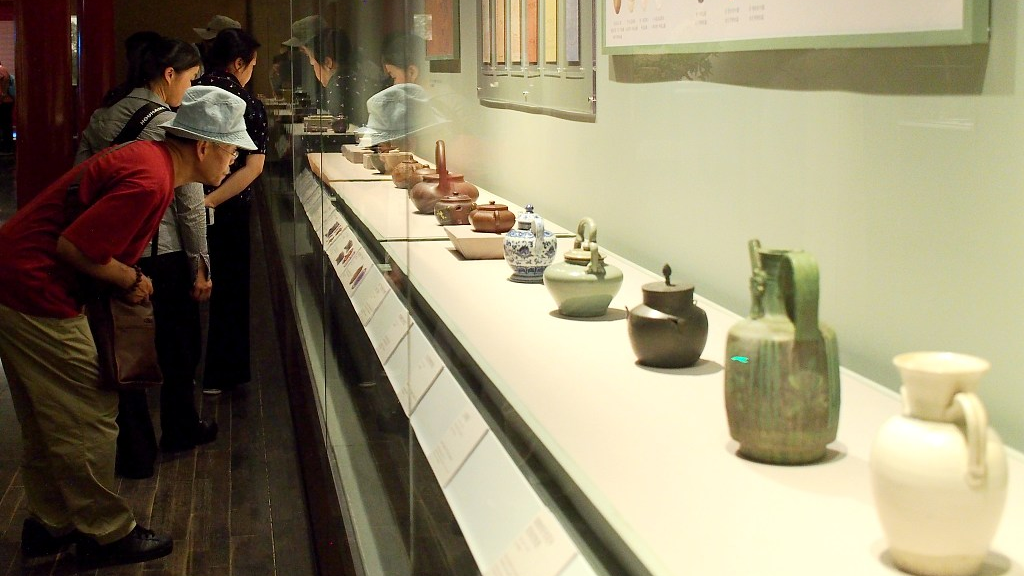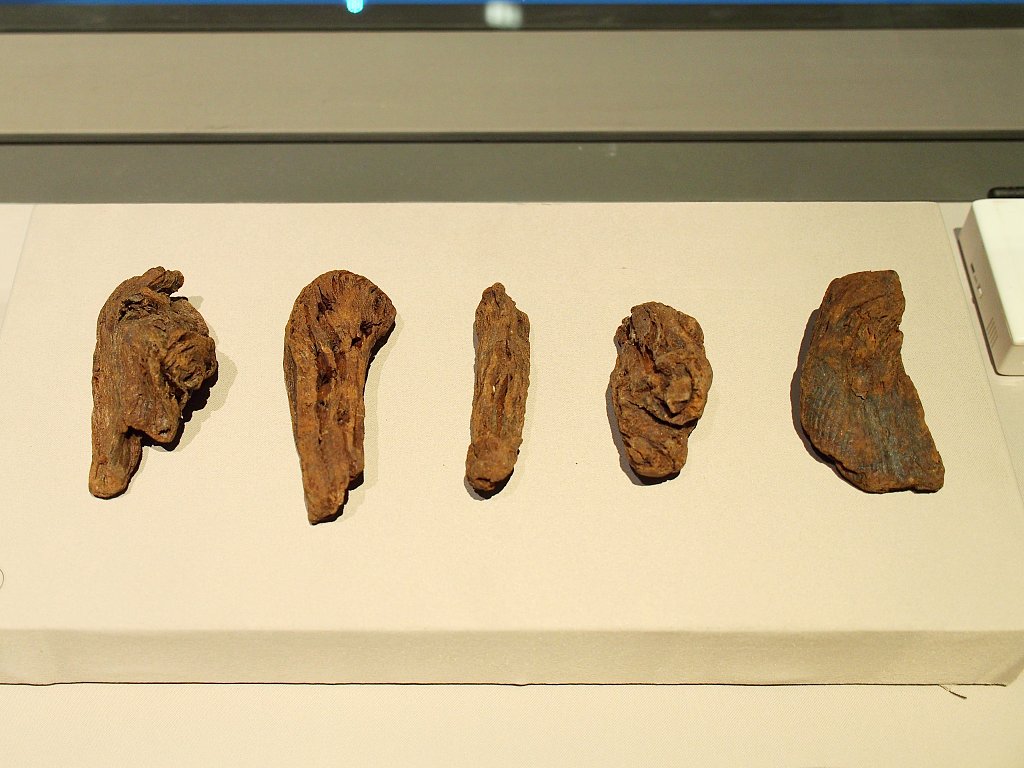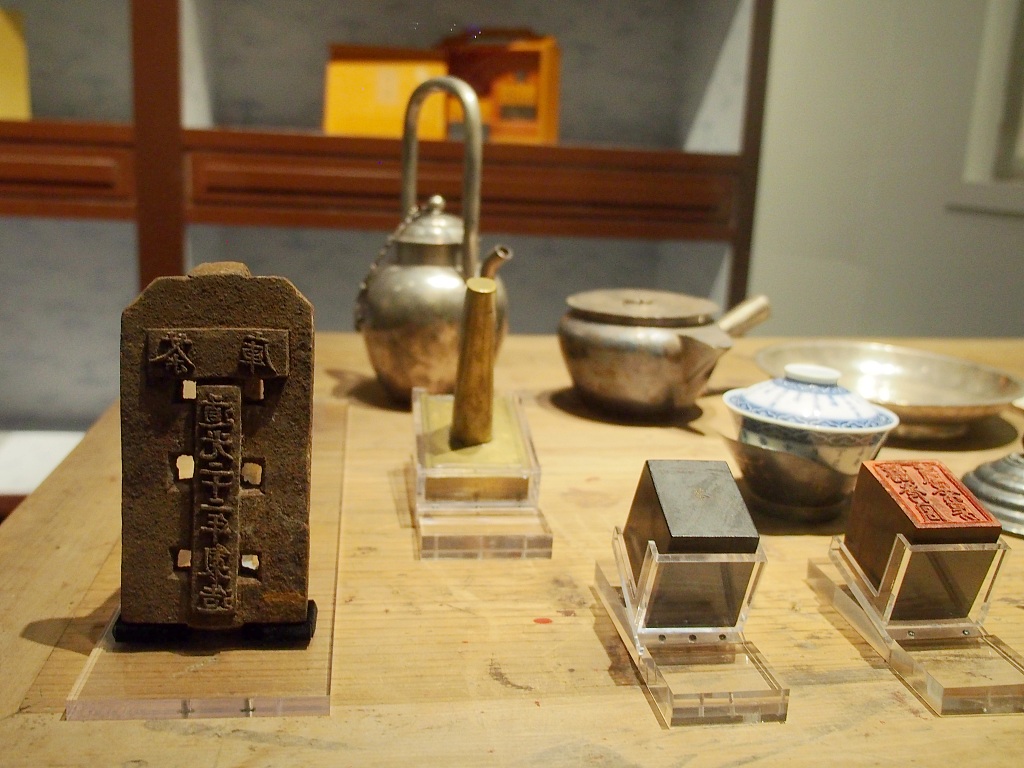
Photo taken on September 6, 2023 shows visitors taking a close look at the exhibits on display at the Palace Museum in Beijing. /CFP
Photo taken on September 6, 2023 shows visitors taking a close look at the exhibits on display at the Palace Museum in Beijing. /CFP
A special exhibition on tea culture opened its doors at the Palace Museum in Beijing recently.
The exhibition showcases 555 artifacts and sets, tracing the development and widespread influence of tea culture over thousands of years. It also embodies the Chinese philosophical pursuit of unity between heaven and humanity.

Photo taken on September 6, 2023 shows ancient tea tree root remnants on display at the Palace Museum in Beijing. /CFP
Photo taken on September 6, 2023 shows ancient tea tree root remnants on display at the Palace Museum in Beijing. /CFP
Among the highlights of the exhibition were ancient tea tree root remnants unearthed from the Tianluoshan site in Yuyao, Zhejiang Province. The discovery of these remnants pushes back the history of Chinese tea cultivation to around 6,000 years ago.
Also, the exhibition includes tea bowls and tea remnants dating back to the Warring States period (475BC-221BC) that were discovered in tombs in Zoucheng, Shandong Province. Through scientific testing, these remnants have been confirmed as the earliest physical evidence of tea consumption after brewing or steeping.
Additionally, the exhibition features archaeological findings of tea leaves from the Han (206 BC-220 AD) and Song (960-1276) dynasties, as well as more than forty sets of tribute teas from the Qing Dynasty (1644-1911), providing tangible evidence of China's over six thousand years of tea cultivation history.
Some of the exhibits in this exhibition are extremely rare and are being displayed to the public for the first time.

Photo taken on September 6, 2023 shows tea utensils from Qing Dynasty on display at the Palace Museum in Beijing. /CFP
Photo taken on September 6, 2023 shows tea utensils from Qing Dynasty on display at the Palace Museum in Beijing. /CFP
Notably, a complete set of tea utensils discovered in a Tang Dynasty (618-907) tomb in Qujiazhuang, Changzhi, Shanxi Province in 2022 is one of the latest archaeological discoveries related to Tang Dynasty tea culture. Also, a painting from the Palace Museum's collection depicting literati gathering around a long banquet table, with tea utensils on the table and a small tea table set up to one side, vividly portrays the elegant life of literati enjoying tea banquets during the Song Dynasty.
The inclusion of "Traditional tea processing techniques and associated social practices in China" in the UNESCO Representative List of the Intangible Cultural Heritage of Humanity in November 2022 holds great significance for promoting Chinese tea culture and deepening cultural exchanges and mutual learning.
The exhibition will run until November 30, 2023.